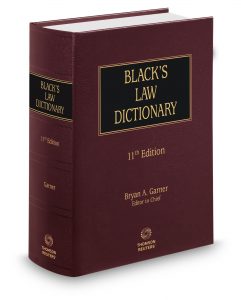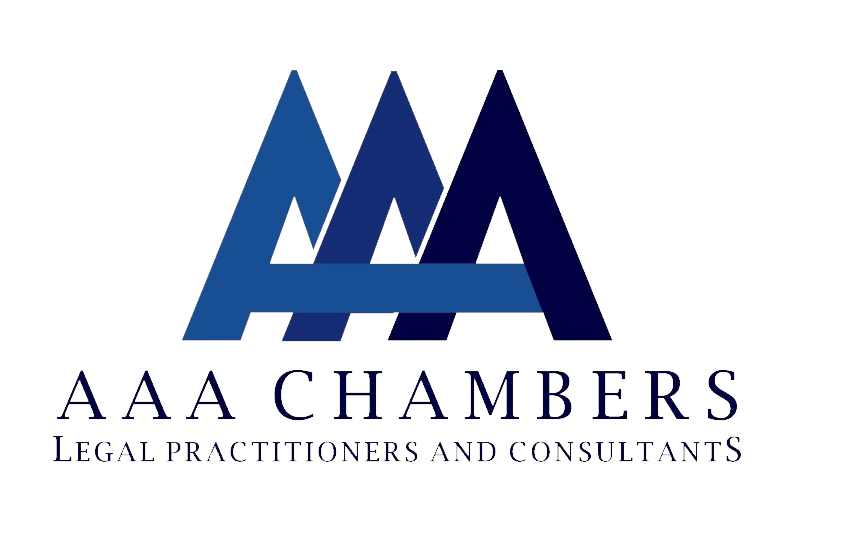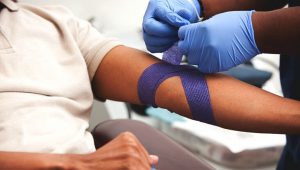BY: Harmony Eghwubare ESQ.
INTRODUCTION:
Medical practice usually involves numerous activities which may give rise to liabilities on the part of the medical practitioner, if same are not professionally handled.
These liabilities may arise in the form of tortious claims and in some other cases, may go beyond the sphere of civil liabilities and extend to criminal liabilities. E.g., removal of an ectopic pregnancy can be regarded as abortion by a patient if the proper papers are not executed/signed.
DEFINITION OF TERMS
- Negligence – This is the failure to exercise the standard of care that a reasonably prudent person would have exercised in a similar situation. It is any conduct that falls below the legal standard established to protect others against unreasonable risk of harm.
- Fiduciary – A duty of utmost good faith, trust, confidence and candor and confidentiality owed by a fiduciary (such as doctors, lawyers etc.) to the beneficiary.
- Liability – The quality or state of being legally obligated or accountable.
- Vicarious Liability – Liability that a supervisory party (such as an employer) bears for the actionable conduct of a subordinate or associate (such as an employee) because of the relationship between the two parties. E.g. LUTH as a whole can become responsible for the negligence of a doctor/nurse.
- Contract – An agreement between two or more parties creating obligations that are enforceable or otherwise recognizable at law.
MEANING/IMPLICATIONS OF MEDICAL NEGLIGENCE
Medical negligence is hinged primarily on the principle of negligence as set forth in the old case of Whitehouse v. Jordan [1981] 1 All ER 267: The claimant was a baby who suffered severe brain damage after a difficult birth.
The defendant, a senior hospital registrar, was supervising delivery in a high-risk pregnancy. After the mother had been in labour for 22 hours, the defendant used forceps to assist the delivery.
The Lords (Judges) found that the doctor’s standard of care did not fall below that of a reasonable doctor in the circumstances and so the baby was awarded no compensation. The case established a duty to take reasonable care in preventing foreseeable injury to another person.
Thus, in order to establish a case of negligence, one must show that a duty of care was owed, that there has been a breach of that duty; and that injury has been sustained as a direct result of the breach of the duty owed.
Medical negligence is an act or omission by a medical practitioner which falls below the accepted standard of care and resulting in the injury or death of a patient. A medical practitioner and medical facilities who undertake to treat, test or do anything incidental thereto in respect of patients, owe a duty of care to such patients.
 A duty of care is usually implied when a person is registered as a patient and being treated/tested in a medical facility. Thus, medical negligence does not only affect the medical practitioner (i.e., doctor or nurse), it also directly affects the medical facility itself. Direct liability for negligence in the case of a medical facility may arise when a such medical facility fails to provide the environment and facilities that will aid the safe treatment and/or testing of patients. For instance, where equipment which are expected to be available are not available or are not functional leading to delayed testing, treatments, injury or death of patients. Some examples include – a non-functional ambulance, unhygienic hospital/ward conditions, non-maintenance of medical records, transmission of infections amongst others.
A duty of care is usually implied when a person is registered as a patient and being treated/tested in a medical facility. Thus, medical negligence does not only affect the medical practitioner (i.e., doctor or nurse), it also directly affects the medical facility itself. Direct liability for negligence in the case of a medical facility may arise when a such medical facility fails to provide the environment and facilities that will aid the safe treatment and/or testing of patients. For instance, where equipment which are expected to be available are not available or are not functional leading to delayed testing, treatments, injury or death of patients. Some examples include – a non-functional ambulance, unhygienic hospital/ward conditions, non-maintenance of medical records, transmission of infections amongst others.
VICARIOUS LIABILITY
Vicarious liability on the other hand will arise where the hospital is held liable for acts, omissions and failure of its staff, in the discharge of their responsibilities in the hospital (e.g., administering a wrong medication or giving a wrong prescription to a patient). The following are several angles from which we would be examining medical liabilities and how they can be mitigated.
FIDUCIARY RELATIONSHIP
A fiduciary relationship exists when a person owes to another the duties of good faith, trust, confidence and candor; and a duty to act in the highest degree of honesty and loyalty toward another person and in the best interests of the other person. (Black’s Law Dictionary).
A patient’s claim may be based on the recognition of a doctor-patient relationship as one which imposes a fiduciary duty on the medical practitioner. A fiduciary duty to protect the patient’s interest is imposed on the medical practitioner in favour of the patient.
However, there are circumstances where a patient suffers injury or damages but cannot validly claim against the medical practitioner because the patient had earlier given his consent to the treatment/procedure; or in a situation where the medical practitioner acts on compulsion to save the life of the patient. A medical practitioner’s actions are less likely to amount to negligence or breach of his fiduciary duty in circumstances where his actions were in line with established medical guidelines, were in good faith and in the best interest of the patient.
THE HUMAN RIGHTS ANGLE
Human rights are rights inherent to all human beings, regardless of race, sex, nationality, ethnicity, language, religion, or any other status. Sections 33-44 of the Constitution of Federal Republic of Nigeria, 1999 (as amended) provides for fundamental human rights; and the rights relevant to this present discourse are as follows:
- Right to life (Section 33)
- Right to personal dignity (Section 34)
- Right to personal liberty (Section 35)
- Right to privacy (Section 37)
- Freedom of thought, conscience and religion (Section 38)
- Freedom from discrimination (Section 42)
Also, Section 23 of the National Health Act, 2014, provides for the rights of a patient and same is summarized below, as follows:
- Right to be informed of the state of their health and the necessary treatment for same;
- Right to know the benefits, risks, costs and consequence of each available treatment;
- The medical practitioner must inform the patient of his right to refuse health service/treatment, and must explain the implication of such refusal.
- All communication must be in a language understood by the patient
RIGHT TO PERSONAL LIBERTY & PERSONAL DIGNITY
Medical practitioners must at all times bear in mind all the relevant fundamental rights of a patient and same is to be safely guarded, in the course of treatment.
The patient has the right to make the final decision regarding his medical care. This is covered by the patient’s right to personal liberty and dignity. The right to health includes the right to freely make decisions on issues touching one a person’s health and to have access to information on health issues and available treatment options.
Failure of a medical practitioner to provide information on all available treatment options may lead to liability for negligence and breach of the patients’ right to health.
In the case of Sideway v. Board of Governors Bethlehem Royal Hospital (1985) 1 All ER. 645, the Court held that it is well within the right of a patient (or the patient’s guardian, as the case may be) as a mature adult to refuse treatment that may prolong his life even though such refusal may seem unwise, foolish or ridiculous to others.
In the case of Medical and Dental Practitioners Disciplinary Tribunal v. Dr. John Emewulu Nicholas Okonkwo (2001) 3 SC 76, the Supreme Court emphasized the supremacy of patients’ autonomy in making decisions concerning their health.
In the McGlinchey v. UK (2003) 37 EHRR, 41, the standard of care was held to be in breach of Article 3 of the European Convention on Human Rights which guarantees the right of every person to be free from cruel, inhuman and degrading treatment. Going by the above discussions, it is clear that the victims of medical errors or malpractices not necessarily amounting to negligence may resort to any of the above options to seek appropriate legal remedy thus, it is expedient for medical practitioners to be extremely mindful of the rights of the patient and ensure that same are not breached.
RIGHT TO PRIVACY
The right to privacy in healthcare context refers to the patient’s right to have control and keep his or her health information private. It also refers to when the protected health information of a patient may be used or disclosed.
Ordinarily, in medical practice there is a professional obligation on practitioners and staff of medical facilities to ensure the confidentiality of a patient’s health information, unless consent to release the information is provided by the patient or on any other recognized legal basis. This flows from the Hippocratic oath that imposes confidentiality obligation on healthcare providers. Confidentiality is a major part of medical practice and the law recognizes communication between a patient and his doctor as a privileged communication. Furthermore, is absolutely necessary for medical facilities and medical personnel to ensure that the medical records of patients are securely kept/stored (whether its soft copies or hard copies). The security of both electronic and paper health records is an essential aspect of healthcare; and consequently an essential aspect of reducing liability that may arise from rendering medical services. A security breach affects both medical devices and health records.
RIGHT TO RELIGION
Given the wide range of religious practices in the world today, it is no surprise that medical practitioners may experience some difficulties/challenges in providing medical care to persons with some level of restrictive religious beliefs. E.g., a patient who is a Jehovah’s Witness may refuse to receive blood transfusion even though it is essential to saving the patient’s life; forcing that patient to receive the blood transfusion would be a breach of the patient’s right under the Nigerian Constitution and under the National Health Act. The exception to this is when the patient is a minor. The position of the law is that the Court has the power to intervene when an application is made to that effect. In the case of Esabunor v. Faweya (2019) 7 NWLR (Pt. 1671) 316 @pg 322 Ratio 2: The 2nd Appellant, the mother of the 1st Appellant, gave birth to him on April 19, 1997 at the Chevron Clinic, Lekki, Lagos. Within a month of his birth, he fell ill and his mother took him back to the Chevron Clinic for urgent treatment. It was found that the 1st Appellant (the child) needed blood transfusion urgently. However, the 2nd Respondent and her husband vehemently refused the blood transfusion; their reason being that there were several risks such as contracting HIV, Hepatitis etc. and that as members of the Jehovah witness sect, blood transfusion was forbidden by their religion.
The 1st Respondent disagreed with the patient’s parents and through a lawyer, brought an application to Court seeking for an order of Court authorizing the medical authorities of the Clinic of Chevron Nigeria Limited Lekki, Lagos to do all and anything necessary for the protection of the life and health of the child. The Court granted the application. Upon appeal, the Supreme Court stated as follows:
“…an adult person who is conscious and in full control of his mental capacity, and is of sound mind has the right to either accept or refuse medical treatment, including blood transfusion…However, different considerations apply to a child because a child is incapable of making decisions for himself and the law is duty bound to protect such a person from abuse…So, when a competent parent or a person in loco parentis refuses medical treatment or blood transfusion for a child on religious grounds, the Court should step in.”
DISCHARGE AGAINST MEDICAL ADVICE (DAMA)
As the name implies, discharge against medical advice is when a patient refuses treatment/insists on being discharged despite the doctor’s recommendations. It is the withdrawal of the patient’s consent to receive medical service.
As earlier established, treatment is not to be administered without consent and it is not sufficient excuse that it was done for the benefit of the patient. The basis for administering treatment on a patient should be hinged on the fact that the patient whether expressly or impliedly has given his consent. Where the attending physician opposes the DAMA without reasonable justification, he may incur liabilities.
Medical staff however, must put in place proper documentation and procedures for cases where the patient insists on DAMA.
Properly drafted and executed DAMA forms will provide protection to physicians from liability and indeed, will be a useful and compelling piece of evidence to help establish a defence for the physician from any liability in any civil suit which may be instituted against him.
If possible, because of the sensitive nature of the DAMA, the most senior doctor available should administer the document; making sure to explain it properly to the patient and to ensure it is properly executed by the patient.
In cases where the patient refuses to sign the DAMA document, the content should be read out aloud and patient’s refusal to sign documented; the fact that the patient was made aware of the risks of leaving should also be documented.
THE CONTRACTUAL ANGLE
 A contract is an agreement between two or more parties creating obligations that are enforceable or otherwise recognizable at law. (Black’s Law Dictionary)
A contract is an agreement between two or more parties creating obligations that are enforceable or otherwise recognizable at law. (Black’s Law Dictionary)
Every document provided by a medical facility to be executed by a patient can be deemed as a contract because it creates a relationship between the patient and the medical facility. It is of utmost importance for the content/clauses of each medical document to be properly drafted (especially, to protect the hospital and the medical practitioner from liability). Where there is a loophole in any signed document, same can be used by the patient against the hospital.
Also, the content of every document including a consent form or discharge against medical advice (DAMA) form, must be properly explained to the person signing in the language the person understands (especially, if he is an illiterate). Also, an illiterates jurat must be included in every hospital form to reduce the extent of the hospital’s liability.
For minors/persons that have not attained the age of consent (18), a parent/guardian will be the proper person to execute any of such medical forms.
QUICK RECAP
- Medical negligence is a real phenomenon and can spell doom for any medical practitioner and/or medical facility, thus, it should be avoided or at least the risk should be reduced to the barest minimum.
- Every medical practitioner owes a fiduciary duty to their patients and thus must always act in good faith and within the professional guidelines.
CONCLUSION
As the saying goes, “doctors treat, but it is God that heals”, thus, the medical practitioner should not be held liable when he has performed his duty within the prescribed professional guidelines.
It goes without saying that in the medical profession there will be situations where patients will suffer some harm or injury in the course of treatment by the medical practitioners. This injury may be caused either by some actions or omissions by the medical practitioner.
Thus, it is necessary for every medical practitioner and medical facility to be extremely mindful of the proper execution of all medical documentation; and put proper measures in place (as discussed above) to reduce liability.







Leave a Reply